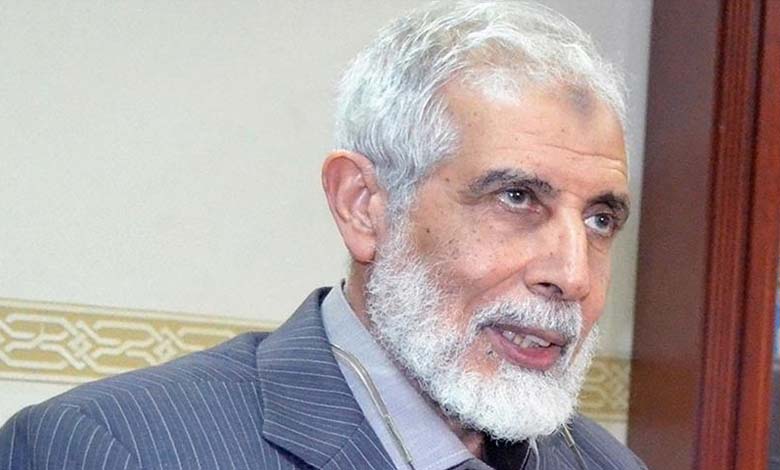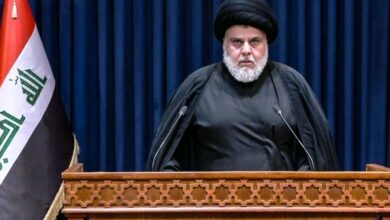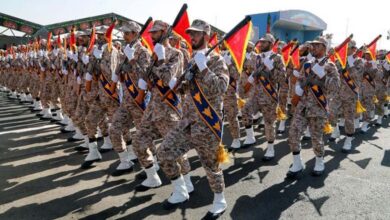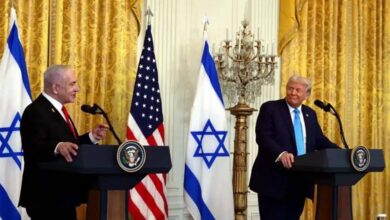‘Al-Ghamry Documents’… Did the Muslim Brotherhood Hand Over Mahmoud Ezzat to the Authorities to Settle Power Struggles?

Not a day passes for the fractured Muslim Brotherhood organization, torn apart by internal conflicts that deepen its wounds, without new evidence emerging to reveal the widening gap of discord, leading generations within the organization to engage in retaliatory acts against each other.
Egyptian dissident journalist Hossam al-Ghamry disclosed a sensational revelation with documents confirming the extent to which the organization has descended into discord, reaching the point of some members being handed over to security forces in order to secure a foothold in the organization’s power hierarchy, including Mahmoud Ezzat, who was acting as the deputy leader of the terrorist Muslim Brotherhood group.
The organization, which relies on the principle of obedience and compliance, has seen disputes over the apex of its power hierarchy, undermining the hierarchical structure of the organization, amidst generational conflicts over authority.
The organization is dominated by the generations of the 1950s and 1960s, disciples of Sayyid Qutb who were accused in the 1965 organization case. They are being challenged for leadership by the generations of the 1970s, disciples of Omar Al-Tilmisani, who succeeded in recruiting them and incorporating them into the organization in the mid-1970s after the Brotherhood‘s release from prisons. Meanwhile, the generations of the 1980s and 1990s, who were raised within the group, and were organizationally stable, participated in labor, political, and media work, are torn between the two fronts.
“Hatred and Obscenity” al-Ghamry, who has been subjected to campaigns of attack and defamation by the Brotherhood, published a document revealing the Brotherhood‘s joy in the “London Front” over the arrest of Mahmoud Ezzat, the deputy leader, on his personal account on the X platform (formerly Twitter).
Al-Ghamry is facing systematic defamation campaigns launched by Brotherhood elements against him after confronting the ideas and positions of the group. The attacks intensified after his praise for the series “Al-Hashashin” and his comparison between the Muslim Brotherhood and “Al-Hashashin”, in terms of origins, goals, means, and outcomes. The campaigns exceeded all bounds, leading al-Ghamry to describe them as “campaigns of obscenities by the Brotherhood of el-Banna and their financiers”.
Before publishing the documents he possessed, al-Ghamry expressed astonishment on his page, stating, “There are 142 comments containing insults and false accusations that suit the obscenity and baseness of the Brotherhood (el-Banna and their financiers). However, I have not found a single comment explaining why they hide their identity on social media platforms and none of them admits to being a member of the Muslim Brotherhood. This is obviously secretive behavior.” He emphasized that the Brotherhood, with their comments, spread obscenity among Muslims, threatening the group and its committees with a surprise by publishing a document, stating: “It will expose and deeply hurt you.”
Hours after his threat, al-Ghamry published a document alleging to have been issued to the Brotherhood‘s London-affiliated student group, confirming that it is part of a plan he has seen and has its papers, which he may publish later. He described the plan as an attempt to reproduce the group anew with a different “New Look”, so they can infiltrate Egyptian society once again and deceive the simple-minded with their internally Kharijite thought.
The New Document The new document, revealed by al-Ghamry, begins with an introduction considering the “arrest of Mahmoud Ezzat as the beginning of a new phase and an opportunity provided to them to push aside and remove those they call the historical leadership, so they can implement their visions,” considering that “Ezzat’s disappearance allows them to reach agreements with the Egyptian authorities and security forces.”
This point prompted al-Ghamry to hint in his analysis of the document that it is not unlikely that the Muslim Brotherhood handed over Mahmoud Ezzat, the deputy leader, to the Egyptian security authorities, to clear the way for young leadership within the group and exclude the old leadership.
He wrote: “Is it possible that the Brotherhood‘s leadership in London whispered to Mahmoud Ezzat until the Egyptian police discovered his whereabouts and arrested him, so they could realize their idea, as the document reveals?”
Al-Ghamry links what happened to previous events in the history of the Brotherhood, asserting that “the Brotherhood finds it easy to kill a Brotherhood leadership if it is in favor of a particular faction.” He wrote: “Dear reader, do not be surprised or dismiss this possibility. Did Abdul Rahman Al-Sindi not send a box of candy containing explosives to kill Sayyid Fayiz on the Prophet’s Birthday, killing him and his children, because their second guide, Al-Hudaybi, chose Fayiz to succeed Al-Sindi in the leadership of the special organization?”
al-Ghamry reveals one of the Brotherhood‘s secrets, saying: “I also learned while I was in Istanbul that this cursed leadership was planning the death of 50,000 of their followers inside the Rabaa sit-in, because Europe, as they claimed, would not tolerate blood and would force President Abdul Fattah El-Sisi to return the late Mohammed Morsi to power because all they cared about in the sit-in was his return to power and rule.”
The document also suggests that “Ezzat’s disappearance will be an opportunity to resolve the situation and the beginning of the clash with the Egyptian state,” but according to al-Ghamry, this hope faded quickly, as the Egyptian state insists on its clear position towards the group, classifying it as a terrorist organization banned in Egypt.
The document concludes with the phrase: “Attacking all historical leaderships at once and with one arrow has not produced any change, and they must fortify themselves behind Ezzat to remove the historical leadership, and this phrase confirms the rootedness of the conflict between the generations of the group and that it is the root of the disagreement between the fronts and nothing else.”












